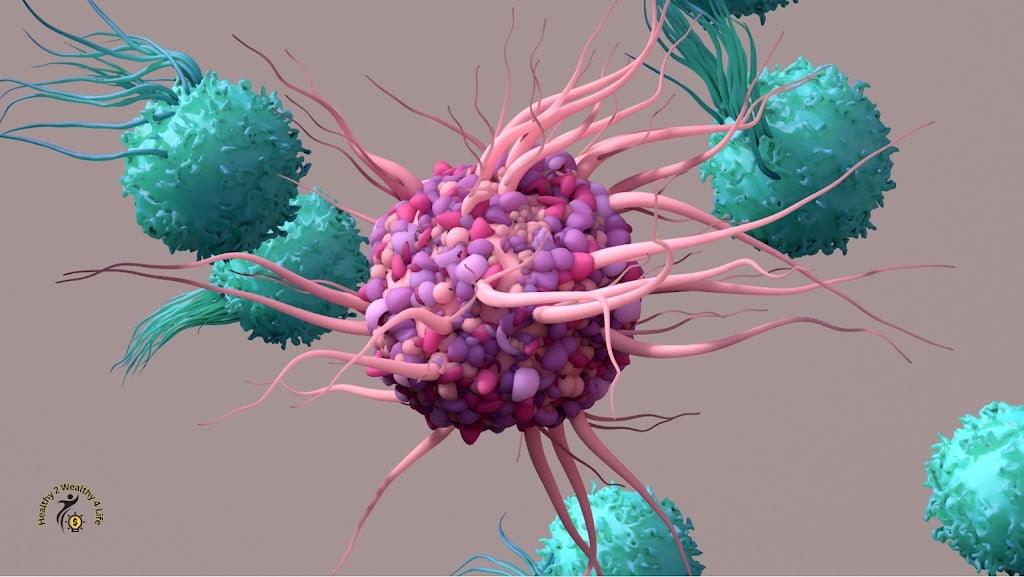Minimizing Fallout from Explosive Cell Death | A Comprehensive Guide
In the realm of cellular biology and health, the phenomenon of explosive cell death has garnered significant attention. Understanding the mechanisms behind this process is crucial for devising strategies to mitigate its harmful effects. In this comprehensive guide, we delve deep into the intricacies of explosive cell death and offer insights into how it can be minimized to promote better cellular health.
%20(3).jpg) |
| Minimizing Fallout from Explosive Cell Death | A Comprehensive Guide |
The Basics of Explosive Cell Death
Explosive cell death, also known as pyroptosis, is a highly inflammatory form of programmed cell death.
It plays a pivotal role in the body’s defense against microbial infections, but when dysregulated, It can lead to severe tissue damage and inflammation-related diseases. Pyroptosis is characterized by the rapid rupture of the cell membrane, releasing proinflammatory contents into the surrounding tissue.
Pyroptosis and Inflammatory Diseases
The Link to Chronic Inflammation
Chronic inflammatory diseases, such as rheumatoid arthritis and inflammatory bowel disease, have been closely associated with dysregulated pyroptosis.
The uncontrolled release of proinflammatory molecules during explosive cell death can perpetuate and exacerbate chronic inflammation, leading to tissue destruction and the progression of these conditions.
Neurological Implications
Emerging research also suggests a potential link between pyroptosis and neurological disorders.
In conditions like Alzheimer’s disease and multiple sclerosis, the activation of pyroptosis pathways within brain cells may contribute to the neuroinflammatory processes that underlie these debilitating illnesses.
Understanding the Pyroptosis Pathway
To effectively minimize the fallout from explosive cell death, it’s essential to comprehend the intricate molecular mechanisms involved. Here’s a simplified breakdown of the pyroptosis pathway:
-
Cell Activation: Pyroptosis is typically triggered by the recognition of intracellular pathogens or cellular damage.
-
Inflammasome Assembly: This multiprotein complex forms in response to danger signals, leading to the activation of caspase-1.
-
Caspase-1 Activation: Caspase-1 is an enzyme responsible for the cleavage of gasdermin proteins.
-
Gasdermin Cleavage: Cleaved gasdermins form pores in the cell membrane, ultimately leading to cell rupture and the release of proinflammatory cytokines.
Strategies to Minimize Pyroptosis Fallout
Targeting Inflammasomes
One promising avenue for minimizing the consequences of explosive cell death is to target the inflammasome assembly process.
Pharmaceutical interventions that inhibit inflammasome activation have shown potential in reducing the severity of inflammatory diseases.
Modulating Gasdermin Proteins
Research into modulating gasdermin proteins is ongoing, with the aim of preventing their cleavage and subsequent cell membrane rupture.
Small molecules and genetic approaches are being explored in this context.
Anti-Inflammatory Therapies
Developing and optimizing anti-inflammatory therapies that target the downstream effects of pyroptosis is another strategy.
These therapies aim to reduce the release of proinflammatory cytokines, thus mitigating tissue damage.
Conclusion
Explosive cell death, or pyroptosis, is a complex cellular process with significant implications for human health.
Understanding the underlying mechanisms and exploring innovative strategies to minimize its fallout are critical steps in advancing our knowledge of inflammatory diseases and neurodegenerative conditions.
By targeting key components of the pyroptosis pathway and developing effective therapies, we can pave the way for a healthier future, free from the detrimental effects of uncontrolled explosive cell death.
FAQ’s
1. What is explosive cell death, and why is it important to understand?
Answer: Explosive cell death, also known as pyroptosis, is a highly inflammatory form of programmed cell death. It’s essential to understand because dysregulated pyroptosis can lead to severe tissue damage and inflammation-related diseases, making it a crucial topic in cellular biology and health.
2. How does explosive cell death contribute to chronic inflammation?
Answer: Explosive cell death can release proinflammatory contents into surrounding tissues, perpetuating and exacerbating chronic inflammation. This process is closely linked to conditions like rheumatoid arthritis and inflammatory bowel disease.
3. Are there neurological implications associated with pyroptosis?
Answer: Yes, emerging research suggests a potential link between pyroptosis and neurological disorders like Alzheimer’s disease and multiple sclerosis. Activation of pyroptosis pathways within brain cells may contribute to neuroinflammatory processes.
4. Can you explain the pyroptosis pathway in simple terms?
Answer: Certainly. The pyroptosis pathway involves a sequence of events starting with cell activation, leading to inflammasome assembly, caspase-1 activation, gasdermin cleavage, and finally, cell rupture (pyroptosis). This process results in the release of proinflammatory cytokines.
5. What strategies are being explored to minimize the fallout from explosive cell death?
Answer: Several strategies are being investigated, including targeting inflammasomes to inhibit their activation, modulating gasdermin proteins to prevent cell membrane rupture, and developing anti-inflammatory therapies to reduce the release of proinflammatory cytokines




